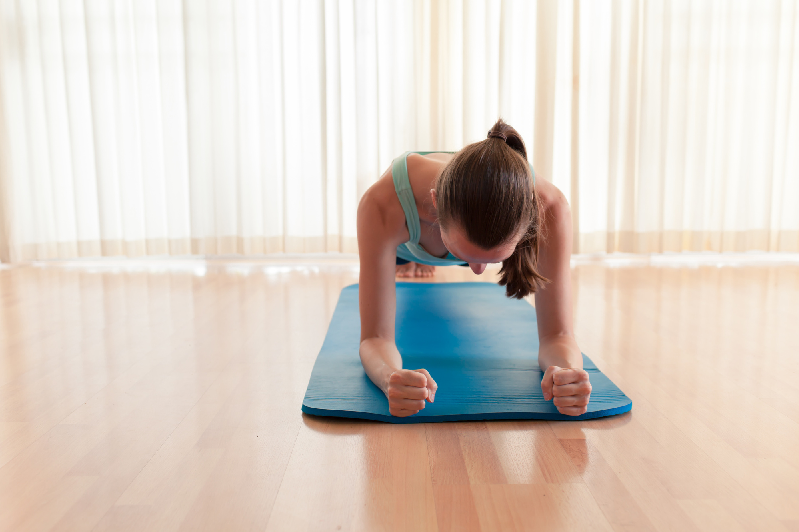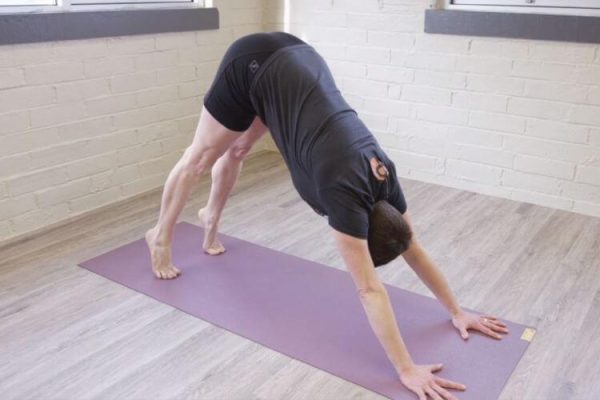You’ve heard it before. Exercising regularly helps you maintain a healthy weight, sleep better, reduces your risk of heart diseases, and strengthens muscles and bones in your body.
But what if you are living with a disability and use a wheelchair? No worries. There are plenty of exercises for disabled persons. Here are our top 10 disability-friendly exercises you can do to get in shape.
Table of Contents
Weight Training
Some of the best exercises for disabled people are weight training ones. You can build incredible upper body strength in a seated position.
If you use a wheelchair, you can do these exercises from your chair.
Here are some of the top ways to work your entire upper body.
-
Shoulder Press
Use a pair of dumbbells in your hands. Face your palms forward with the weights at shoulder height. Then as you exhale, press the weights up until both arms are over your head.
Lower and repeat between 8-12 times. This is one set. Work your way up to three sets of 12 reps. Then increase the weights.
-
Tricep Extensions
Triceps are pesky little muscles that are often underworked in most people. Tricep extensions are a great exercise to build that muscle.
Hold one dumbbell with both hands over your head. Keeping your elbows as close to your head as you can, lower the weight toward your back.
Extend your arms back up to the starting position. This is one rep.
Don’t be surprised if it is hard to do even five reps. Good form is important so go slowly and build up your resistance.
-
Bicep Curls
Take a dumbbell in each hand and extend your arm straight out in front of you, palms up.
Now, bend your elbows and bring your weights up towards your chin. Make sure not to raise your elbows.
Body Weight Exercises for Disabled Adults
Who says you have to use equipment to get in shape? The following exercises are all bodyweight exercises. All you need is yourself to get strong using these exercises.
Be sure to have your Starkey Livio 2400 ready to go to enjoy music as you get your heart pumping.
-
Seated Tricep Lifts
This move works your chest, shoulders, and triceps all in one. The benefit of tricep strength is that it makes transferring yourself from a chair to another spot easier.
Sit in a chair or your wheelchair. With your hands directly below your shoulders, bend your elbows. Push yourself off the chair an inch or two.
If you can’t lift your body, just push hard and hold for 10 seconds. Do this up to 10 times for a set.
You can experiment with different arm angles for this exercise as well.
-
Seated Knee Raises
This exercise is ideal for strengthening your hip flexors. Those are the muscles that surround the hip. Stronger hip flexors means walking, bending, and transferring is easier.
To do this exercise, you will have to have some control of your lower body.
In a seated position, raise one knee up so that your foot is a few inches off the floor. Slowly lower and repeat with the same leg.
Once you complete one set of 8-12 reps, switch legs.
-
Forearm Plank
Don’t do this exercise if your disability limits you from this. You may need another adult to help you get in and out of this position.
Start by lying face down on the ground. Place your forearms under your shoulders and lift your body into plank position.
Now your body weight rests on your forearms and toes. Flex your core and hold this position. Start by holding for 10 seconds and work up to a minute (or more).
This move works your entire core as well as your back.
-
Reverse Crunches
Another move for a stronger core is reverse crunches. This is a great core exercise for disabled people who are not able to do a crunch or sit up.
Start lying on your back on the floor with your feet on the ground, knees bent at 90 degrees.
Use your core muscles to pull yourself back into a seated position. Lower yourself slowly back down.
If this is too tricky, use your hands on your knees or thighs to help pull you up. If necessary, put one elbow on the floor to help you.
Workouts Using a Resistance Band
There are tons of resistance band exercises for disabled people that you can do. Most of these allow you to be in a seated position.
Also, you don’t need to purchase dumbbells for these moves. With just one or two resistance bands, you can get a whole body workout.
-
Chest Press
Loop the band around the back of your chair. Hold the ends of the bands in each hand at chest level. Stretch your arms out straight as you grip the bands.
You should feel this in your chest and arms. Make sure to choose a band that has enough resistance for your strength. If necessary, loop the band around the chair twice to make it harder.
Work your way up to 3 sets of 12 reps.
-
Reverse Flys
Hold an end of the band in each hand. Extend your arms straight in front of your. Pull your arms apart and backward towards your back.
Imagine that you are a bird stretching your wings. Hold for a moment before returning to the starting position.
Fold the band in half to make this move harder. Repeat as necessary for a good burn.
-
Back Extensions
Start by placing the middle of a resistance band under your feet or anywhere on your chair that is most convenient for you.
Grasp each handle and inhale. As you exhale, bend forward at the waist until your back is parallel to the floor. You should feel tension in the band as you lean forward.
Return to the start position and repeat.
No Limit to Exercises for Disabled Persons
There you have it! A bunch of body strengthening exercises for disabled persons.
A strong body is useful for many reasons. It makes it easier for you to hold yourself up straight with good posture, it makes moving from chair to bed and vice versa easier.
Plus, when you exercise regularly you feel better and sleep better! Check out our other blog posts for more interesting articles for you to read.




